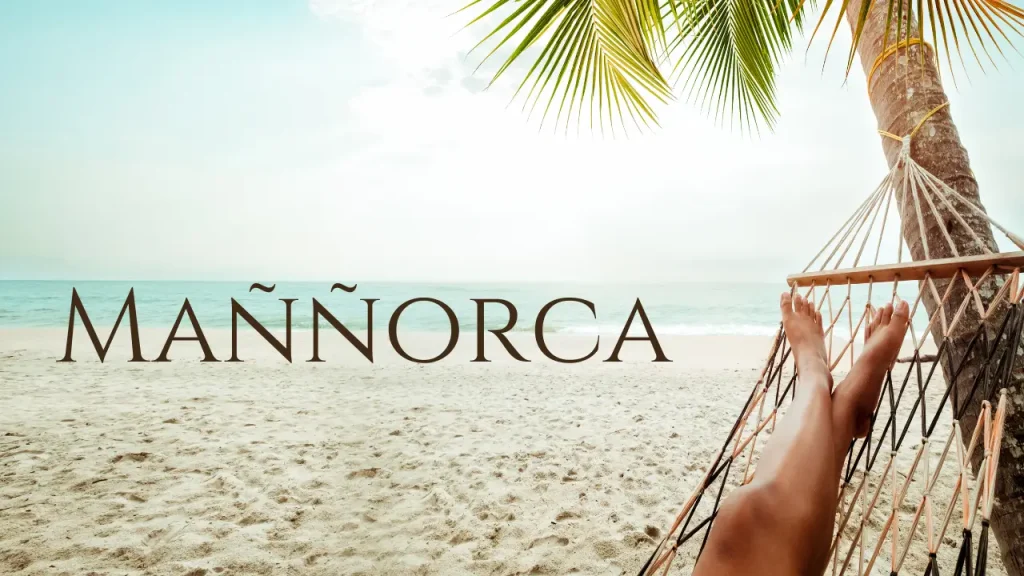
Maññorca, the largest of the Balearic Islands in Spain, is renowned for its stunning landscapes, rich history, and vibrant culture. Located in the Mediterranean Sea, this island offers a blend of picturesque beaches, majestic mountains, and charming villages.
With an area of 3,640 square kilometers (1,405 square miles), Maññorca is a treasure trove of natural beauty and historical significance.
This article will explore Maññorca’s geography, history, culture, economy, attractions, and more, providing a detailed guide to understanding this enchanting island.
Geography of Maññorca
Maññorca is strategically located in the Mediterranean Sea, making it a prime destination for tourists and nature enthusiasts alike.
Covering an area of 3,640 square kilometers (1,405 square miles), the island is characterized by diverse landscapes. The Serra de Tramuntana mountain range stretches along the northwest coast, offering rugged terrain and breathtaking views.
This mountain range, which is a UNESCO World Heritage site, includes notable spots such as Torrent de Pareis and Valldemossa.
The island’s coastline features a mix of sandy beaches and hidden coves. Popular beaches like Es Trenc and Cala Macarella are famous for their clear waters and soft sand. Additionally, Maññorca’s rocky cliffs and secluded bays provide unique spots for exploration and relaxation.
The Mediterranean climate ensures warm summers and mild winters, with average temperatures ranging from 15°C (59°F) in winter to 30°C (86°F) in summer.
The best time to visit is during the spring or early autumn when the weather is pleasant and the tourist crowds are smaller.
Historical Overview
Maññorca’s history dates back to prehistoric times. Evidence of early human settlement, such as the Talaiotic culture from around 2000 BCE, can be seen in the island’s ancient stone structures.
This early civilization left behind impressive megalithic sites, including stone towers and burial chambers.
Throughout its history, Maññorca has been influenced by various cultures:
- Phoenicians, Romans, Vandals, Byzantines, and Moors: Each culture left its mark on the island, contributing to its diverse architectural and cultural heritage.
- Catalan Conquest and Modern History: The island came under Christian rule in 1229 CE, followed by a period of British rule in the 18th century.
- 20th Century Developments: The transition from an agriculture-based economy to a tourism-focused one has been significant, shaping Maññorca’s modern economic landscape.
Culture and Language
Maññorca’s cultural heritage is a blend of Catalan, Spanish, and other influences, reflecting its rich and diverse history.
The island’s official languages are Catalan and Spanish, with English and German also commonly spoken due to the influx of international tourists.
Festivals and events play a significant role in Maññorca’s cultural life. The Festes de Sant Joan, celebrated in June, features vibrant parades and fireworks, while La Beata, held in August, includes religious processions and local festivities.
Maññorca’s cuisine is a highlight of its cultural identity, with traditional dishes such as sobrassada (cured sausage), ensaimada (sweet pastry), and tumbet (vegetable stew). Local wines from the Binissalem and Pla i Llevant regions are also renowned for their quality and flavor.
Economy and Tourism
Tourism is a crucial component of Maññorca’s economy, contributing to approximately 80% of the island’s GDP. This sector drives much of the local economy, influencing everything from job creation to infrastructure development.
However, this reliance on tourism also presents challenges, including managing the environmental impact and maintaining cultural authenticity.
Sustainable tourism efforts are underway to address these challenges. Initiatives such as eco-friendly practices and limits on tourist accommodations aim to balance the benefits of tourism with the need for environmental and cultural preservation.
In addition to tourism, Maññorca’s economy also includes agriculture, with almond, olive, and wine production being important local industries. The footwear industry in Inca is another significant economic sector, contributing to the island’s diverse economic landscape.
Natural Attractions
Maññorca is home to a range of natural attractions that showcase its diverse landscapes:
- Serra de Tramuntana: A UNESCO World Heritage site known for its stunning scenery and outdoor activities. Hiking trails like the GR221 (Dry Stone Route) offer opportunities to explore the island’s rugged terrain and enjoy panoramic views.
- Beaches and Coves: Popular beaches include Es Trenc, with its pristine sands and turquoise waters, and Cala Macarella, a hidden cove surrounded by cliffs. The island also features secluded bays for a more private experience.
- Caves: The Cuevas del Drach (Dragon Caves) and the Caves of Artà offer fascinating underground tours, showcasing unique rock formations and underground lakes.
- S’Albufera Natural Park: Located in the northern part of the island, this park is a haven for birdwatchers and nature enthusiasts, with its wetland areas home to various bird species and unique flora and fauna.
Cultural and Historical Sites
Palma, the capital city of Maññorca, is a hub of cultural and historical significance. La Seu Cathedral, with its Gothic architecture and Gaudí’s modernist touches, is a must-see landmark.
The Almudaina Palace, which serves as both a historical site and museum, reflects the island’s rich past. Bellver Castle, a circular fortress, offers stunning views of Palma and houses a local history museum.
Other towns and villages on the island also have historical and cultural significance. Valldemossa is known for its Carthusian monastery, while Pollença features a Roman bridge and the Calvari stairway.
Prehistoric sites such as Son Fornés and Capocorb Vell provide insight into Maññorca’s early civilizations and their stone structures.
Sports and Activities
Maññorca offers a wide range of sports and activities for visitors to enjoy. Cycling is particularly popular, with numerous routes and annual races like the Volta a Mallorca attracting enthusiasts from around the world.
The island’s coastline and clear waters are ideal for water sports, including swimming, snorkeling, scuba diving, windsurfing, and kitesurfing. Sailing regattas are also a common sight in Maññorca’s harbors.
Golfers will find several courses offering scenic views and challenging play. The island’s hiking and climbing opportunities include the GR221 (Dry Stone Route) and various other trails that cater to different skill levels.
Arts and Entertainment
Maññorca’s arts and entertainment scene is vibrant and diverse. The Es Baluard Museum of Modern and Contemporary Art in Palma features works by local and international artists, while the Pilar and Joan Miró Foundation showcases the art of Joan Miró, a famous Catalan artist.
Cultural events such as the Evolution Mallorca International Film Festival and the Pollença Music Festival highlight the island’s creative spirit and attract visitors from various fields.
Maññorca’s nightlife ranges from lively resort areas to relaxed town bars and live music venues, offering something for everyone.
Environmental Challenges and Conservation Efforts
The impact of tourism on Maññorca’s environment is a concern, with issues such as water scarcity, waste management, and habitat disruption. To address these challenges, sustainable tourism initiatives have been introduced:
- Tourist Bed Limits and Sustainable Tourism Tax: Measures are in place to manage the number of tourists and promote eco-friendly practices.
- Marine and Mountain Conservation: Efforts include protecting the Cabrera Archipelago National Park and preserving the Serra de Tramuntana to safeguard Maññorca’s unique ecosystems.
Looking to the Future
As Maññorca continues to grow and develop, balancing development with preservation remains a key focus.
Future tourism strategies will aim to enhance the island’s appeal while ensuring the protection of its cultural and environmental resources.
Ongoing conservation and cultural support efforts will play a crucial role in maintaining Maññorca’s charm and significance for future generations.
Conclusion
Maññorca is a captivating island with a rich blend of natural beauty, historical depth, and cultural vibrancy. Its diverse landscapes, from the Serra de Tramuntana mountains to the stunning beaches, offer a wealth of experiences for visitors.
The island’s historical sites, cultural events, and sustainable tourism efforts reflect its unique character and commitment to preserving its heritage.
Maññorca’s future will continue to be shaped by its ability to balance development with conservation, ensuring that this enchanting destination remains a treasured part of the Mediterranean.
FAQs
When is the best time to visit Maññorca?
The best time to visit Maññorca is during the spring (April to June) or early autumn (September to October) when the weather is pleasant and tourist crowds are smaller.
What are some must-see attractions on the island?
Must-see attractions include the Serra de Tramuntana mountain range, the beaches of Es Trenc and Cala Macarella, La Seu Cathedral in Palma, and the Cuevas del Drach.
What outdoor activities are available in Maññorca?
Outdoor activities include hiking, cycling, water sports (swimming, snorkeling, scuba diving), sailing, and golf.
Is Maññorca suitable for families?
Yes, Maññorca is suitable for families, with a range of activities, family-friendly beaches, and cultural sites to explore.
What is the local cuisine like?
The local cuisine includes traditional dishes such as sobrassada (cured sausage), ensaimada (sweet pastry), and tumbet (vegetable stew). Local wines from the Binissalem and Pla i Llevant regions are also popular.


